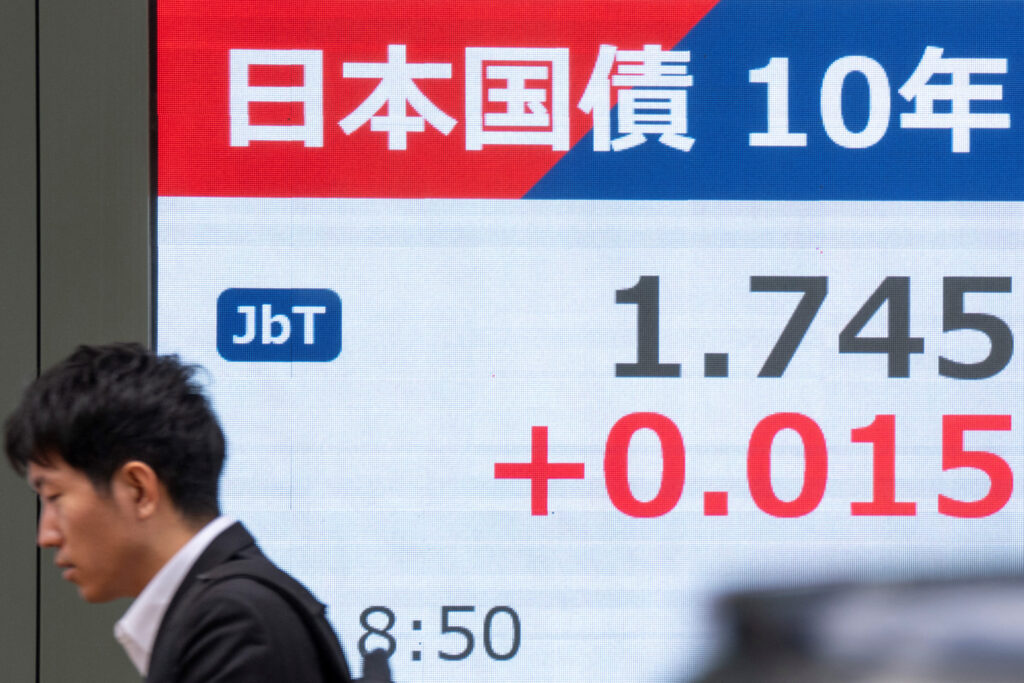Japan has an aging population, and the government has enormous transfer programs that benefit seniors, increasing strains on the government’s already bloated budget. Sounds familiar.
Except, Japan is much further along in that demographic transition than the United States. Seventeen percent of Americans are over 65. Twenty-nine percent of Japanese are.
Because of that larger senior population, Japan has much higher public debt than the United States, as a share of the economy. The U.S. national debt is around 120 percent of gross domestic product. Japan’s is around 250 percent of GDP, higher than any other developed country.
And yet, Japan’s staggering debt load has not caused a major crisis. It can be tempting for Americans who are skeptical of budget hawks to see in Japan a rich country that is plodding along with far higher public debt and ask why the same can’t be true here.
Japanese public finance is a bit like Japanese television shows: unique, confusing to outsiders and poorly suited to American tastes. Giving up decades of economic growth in exchange for enormous public-sector asset ownership to prop up an unsustainable entitlement system, as Japan has done, is not an example for America to follow.
A new paper in the Journal of Economic Perspectives by Yili Chien, Wenxin Du and Hanno Lustig tries to figure out how Japan has managed its massive debt. They find that the Japanese public sector (broadly defined to include national and local governments, the central bank and pension funds) borrows at low interest rates domestically to invest in long positions in risky assets. It’s a jury-rigged sovereign wealth fund.
Japan can afford to do this because the Bank of Japan keeps interest rates extremely low, for many years below zero. It can do so in part because there aren’t really price signals in the Japanese public debt market. The Bank of Japan holds over half of Japan’s government bonds. The majority of the remainder is held by Japanese commercial banks and corporations, which are required by law to hold government bonds.
“That artificially reduces yields on government debt, allowing them to subsidize higher deficits,” Paul Winfree, president of the Economic Policy Innovation Center, told me. “But it also means that they have less money to invest in private debt, thus reducing private sector investment. That in turn reduces growth.”
Three decades of evidence backs that up. Japan’s real GDP is roughly the same today as it was in 1992. U.S. real GDP has increased by 130 percent in that time. And despite Japan’s declining population, real GDP per capita has risen very slowly compared with the U.S. The U.S. led Japan by about $8,000 in that metric in 1992. Today, the U.S. is roughly $30,000 ahead.
The JEP paper adds up all of Japan’s public liabilities and finds that they total 270 percent of GDP. Yikes. At the same time, the jury-rigged sovereign wealth fund has assets that total 192 percent of GDP. So, net liabilities are 78 percent of Japan’s GDP.
U.S. net liabilities, calculated under the same methodology, are actually higher at 84 percent of GDP. The U.S. public sector (including federal, state and local governments, the Federal Reserve and pension funds) holds assets worth only 46 percent of GDP.
“Moreover, while Japan’s population has already reached an advanced stage of aging, the United States is only beginning to enter this demographic shift,” the paper says. To already be in a slightly worse net liabilities position is not a good starting point.
The Japanese strategy is working, if all you mean by “working” is not having a major debt crisis. But aside from the stagnant economy that has resulted, the paper notes that the strategy is risky in two significant ways.
First, Japan’s public liabilities are mostly short-term, while its assets are mostly long-term. That means even relatively small increases in interest rates can cause major problems for the Japanese economy.
In the U.S., “We worry that if the Federal Reserve tightens a little too fast, there might be a taper tantrum or something relatively minor like that,” says Marc Goldwein, senior vice president at the Committee for a Responsible Federal Budget. In Japan, “They worry that if the Bank of Japan tightens at all, the whole system will collapse.”
Second, the Japanese public sector borrows in yen and invests in currencies from countries with higher interest rates. That means it is always susceptible to scenarios where the gap between those currencies narrows. Those could occur because the yen appreciates or because foreign currencies depreciate, which could happen for a number of reasons.
With higher risk comes higher reward, and Japan has been able to make this unusual strategy of public investment work well enough for a while. The U.S. is nowhere near replicating it, and it shouldn’t try to.
Imagine explaining to Americans that the government is going to mandate that their employers buy government bonds with money that they could have used to give them a raise instead. Or that the widely distrusted “elites” are going to be managing a complicated, highly leveraged, risky investment portfolio with money they borrowed from American households.
To avoid falling into Japan-style arrangements, the U.S. is going to need to reform its entitlement programs and continue to grow its economy. Japan isn’t a model for how to deal with a debt problem. It’s a warning of what will happen if it continues to go unaddressed.
The post Japan’s approach to aging, debt-ridden decline is no model for the U.S. appeared first on Washington Post.




